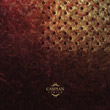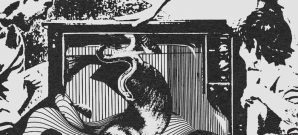
Let’s say it straight off: instrumental music is a hard pill to swallow for a generation raised on autotune puppets schlepping one-off ditties. Caspian swims against the current in this regard, crafting music of such organic beauty that you would absolutely cringe to see any bit of it lopped off and pasted piecemeal onto one of those black-silhouetted iTunes ads. Their latest release Tertia builds in this vein with a monstrous ambition matched by a virtuosity of execution.
When you first hear the distant crackle of the retro radio transmission hovering at the very point of audibility in opener "Mie", you know something big is headed you’re your way. The feel is like that of climbing the first peak of a rollercoaster: excitement, anxiety, terror. Caspian has a habit of luring you in with soft sounds, tropes of quiet beauty, before dropping you straight off a very steep cliff. As "Mie" morphs into the next track "La Cerva", a wall of guitar fury burst forth, hurtling you forward. There are no dead spaces between songs on Tertia. Once you buy the ticket, you’re taking the ride.
But the album is not all about sheer thrills. There’s a story being told that is too big for lyrics (nearly too big for a reviewer’s pen). In broad strokes, Tertia is a story about conflict, confrontation, conflagration, wherein the listener is drawn through a crucible of intense yearning the size of a needle’s eye, spit out, and reborn. To narrate such a journey, Caspian adopts the conventional equipment of a contemporary rock band – guitar, drums, bass, synth, samples – and puts them to very unconventional uses. One usually doesn’t hear this kind of music attempted in this mode and medium. It strikes one at first as if Michelangelo had redone the Sistine Chapel in crayon. But Caspian simply refuses to disrespect the potential of their instruments, and the passion of their delivery will make you a believer as well.
Songs like "Malacoda" and "Of Foam and Wave" paint battle scenarios of distorted guitar, spitfire drums, and relentless driving bass. These songs provide the real hard rock undercurrent that is Caspian’s bread and butter. At the other end of the spectrum, Caspian launches a more electronic attack in "Epoch in Dmaj" and at the beginning of "Ghosts of the Garden City". It’s common these days for artists to mix analog and digital possibilities in their songwriting, but what Caspian does especially well is let both possibilities speak in their own language. They don’t plug in a synth line where a bass line would have served just as well; they let the unique textures of each instrument determine the instrument’s role in the song. The result is a ‘just so’ quality that is hard to relate.
Three albums in, Caspian is putting together tremendously accomplished and ambitious music. Yet there is still room to grow (and that’s an exciting thing to say). Some of the tempo changes and compositional devices are in danger of wearing out their novelty by the end of the album. Of course, that’s the challenge of having no flag-waving vocalist to draw attention away from musical imperfections. But if Caspian wasn’t willing to take on that challenge, to present the listener with a sonic gift in the absolute naked raw, they would never have accomplished Tertia in the first place.



















